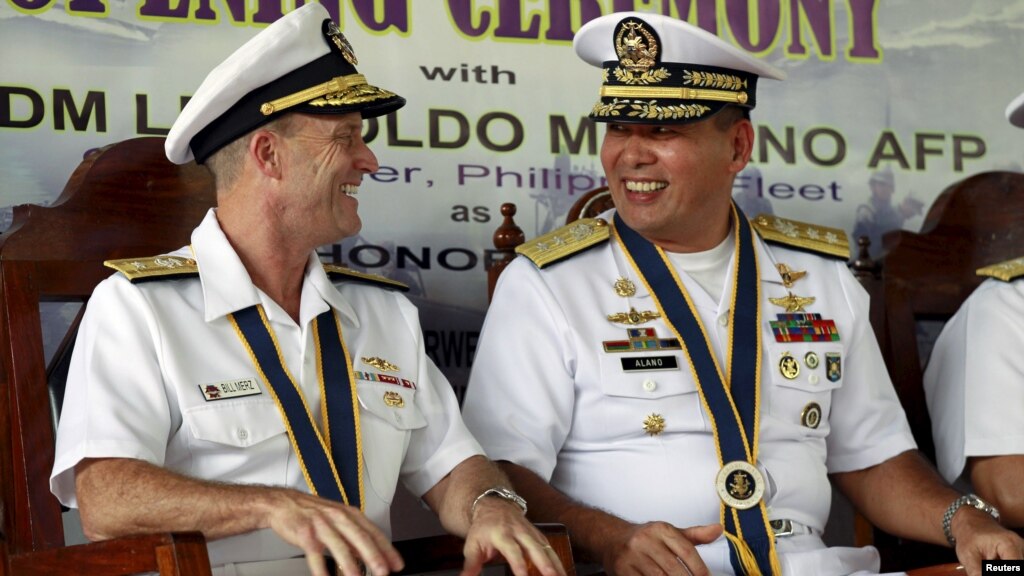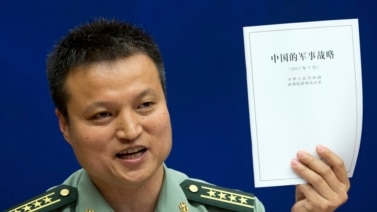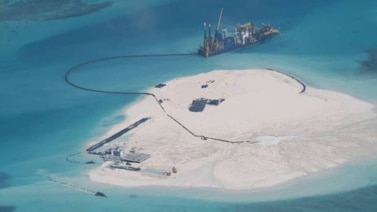
Military exercises between the United States and the Philippines opened Monday. At the same time, naval forces from the Philippines and Japan launched joint training. Both military exercises are taking place in the western Philippines -- not far from the South China Sea.
The Philippine exercises with the United States involve a naval combat ship, the USS Fort Worth, and a P-3 Orion surveillance airplane. The Philippine Navy says troops will train in intelligence-gathering by air, and do live fire and ship search and seizure exercises. Navy officials say all of this will take place in Philippine waters on the eastern side of Palawan Island.
Philippine Navy Lieutenant Commander Lued Lincuna spoke to VOA. He said work with Japan’s Maritime Self Defense Force is a maritime, or naval, activity -- not a maritime exercise. He said the aim of the training is to prepare for humanitarian and disaster assistance, as well as search and rescue help.
The Philippine official said planes from each country will fly beyond the country’s territorial waters, 22 kilometers from the coastline.
“The concept of the maritime activity is that both aircraft will take off and then go to the area -- which until now I don’t know where -- then they will have some activity there in relation to the search and rescue.”
The South China Sea is on the western coast of Palawan Island. About 300 kilometers to the north are the Spratly Islands, where China is developing man-made islands on at least seven coral reefs. Almost all of the reefs are also claimed by the Philippines.
Brunei, Malaysia, Taiwan and Vietnam also have competing claims in those waters. The area is said to be rich in sea life and natural gas. Ships transport trillions of dollars in trade through the area. Japan has its own dispute with China over a small group of islands in the East China Sea.
For years, the Philippines had one of the smallest military budgets in East Asia. But the country has been slowly building up its armed forces. The Philippines also has strengthened its partnerships with its allies. At the same time, China has grown more aggressive in claiming its rights to large areas of the South China Sea.
Philippine military officials say the training with the U.S. this year will build on years of exercises. They also said the operation is not related to the dispute between the Philippines and China in the South China Sea.
But some observers say the joint exercises between the Philippines and Japan have what they call a “symbolic” significance for Japan.
The New Patriotic Alliance Party of the Philippines has been opposed to the U.S. military presence in the country. Its secretary general, Renato Reyes, says now the country has to be concerned about Japan’s military interest here.
“They [Japan] probably plan to flex more and more of their military muscles in the coming years. So we don’t want to be used as a steppingstone. We don’t want to be used as footstool for either American interventionism or Japanese militarism.”
Philippine President Benigno Aquino visited Japan earlier this month. During the visit, he said the two countries would begin working on a formal visiting forces agreement to have more Japanese troops rotate to the country.
Simone Orendain reported this story from Manila. George Grow adapted it for Learning English. Ashley Thompson was the editor.
Words in This Story
combat – n. battle; fighting, especially in a war
surveillance – n. gathering information or intelligence; spying
maritime – adj. naval; relating to sailing or next to the sea
beyond – adv. on or on to the farther side of something
symbolic – adj. representing an idea or something
rotate – v. to have flat parts and moving like the parts of a wheel


